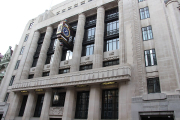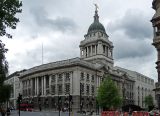
The City of London Corporation has given its backing to a proposal aimed at converting the historic Kingsway Exchange Tunnels into a captivating tourist destination
themed around the Cold War era.
Located 40 meters below Holborn's streets, this 8,000-square-meter network once played pivotal roles as both a communications hub and a clandestine base for Britain's Special Operations Executive, an offshoot of MI6. It is said to have inspired Ian Fleming's "Q Branch" in the James Bond novels, adding to its intrigue.
Initially constructed as air-raid shelters during World War II, the tunnels were repurposed post-war to house up to 200 staff, complete with self-sustaining water and air conditioning systems. Notably, it housed London's deepest licensed bar and a restaurant designed with simulated windows, providing a unique glimpse into Cold War-era secrecy and innovation.
Developer London Tunnels Ltd intends to refurbish the tunnels under a £220 million scheme, opening access points on Furnival Street and High Holborn. The proposed attraction, slated to open by 2027, is anticipated to inject between £60 million to £85 million annually into the local economy, with educational visits offered to London schools free of charge.
Shravan Joshi, Chair of the City of London's Planning and Transportation Committee, expressed enthusiasm for the project, envisioning it as a global draw for diverse visitors.
The fate of this ambitious plan now rests with the London Borough of Camden, which shares jurisdiction over the Kingsway Exchange Tunnels. Originally commissioned as air-raid shelters in the 1940s and later repurposed as a strategic government headquarters and communications center, the tunnels represent a significant chapter in British history.
From housing a document repository post-war to serving as a vital communication exchange for the General Post Office and later the site of the first transatlantic telephone cable terminal in 1956, the tunnels have witnessed pivotal moments in global communications.
After ceasing operations in 1990, the site has served primarily as storage. The recent agreement between BT Group and London Tunnels Ltd marks a significant step towards revitalizing this historic site into a beacon of historical education and tourism. Photo by John Pannell from Watford, UK, Wikimedia commons.







































